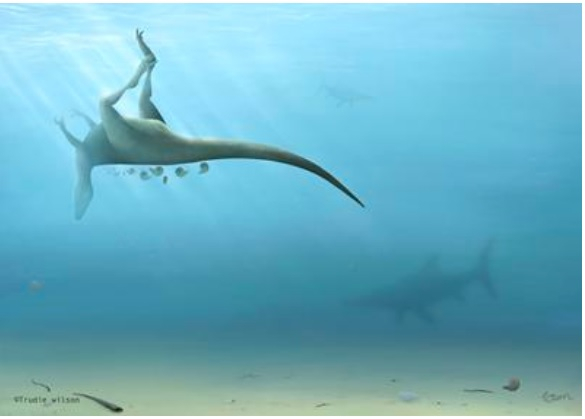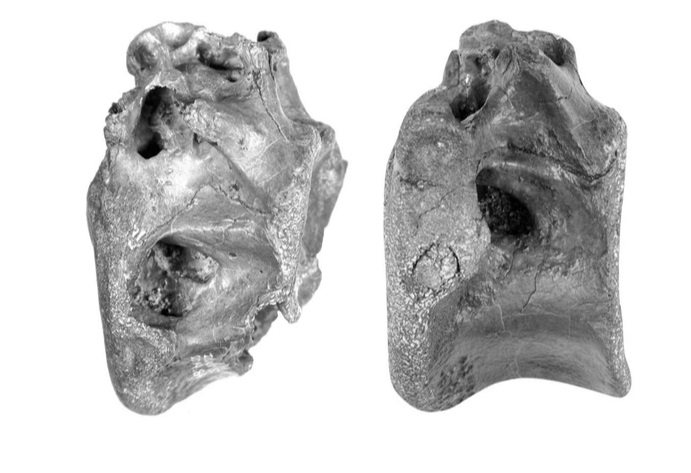Palaeontologists from the University of Southampton have announced the discovery of four bones belonging to a new dinosaur species, specifically linked to the family of Tyrannosaurus rex, on the Isle of Wight, in England.
The palaeontologists said that the T-Rex relative used to live in the Cretaceous period--the last and longest segment of the Mesozoic Era--115 million years ago. As per recent findings, it is estimated that these creatures have been almost four meters long. It is likely that this newly found species lived in an area just north of where the remains were found, with the carcass having washed out into the shallow sea, they said.
A T-Rex Relative

This species has been named Vectaerovenator inopinatus, which refers to the large air spaces in some of its bones that are identified as one of the traits which helped the scientists to find its link with theropod dinosaurs.
The scientists classified the Isle of Wight dinosaur as a new species of a theropod dinosaur, a group which included modern-day birds. The air sacs in its bones were also similar to those identified in modern birds and extensions of the lungs. These may have helped the T-Rex relative to fuel an efficient breathing system while making the skeleton lighter than other dinosaurs.
These bones belonging to the neck, back, and tail were discovered on the foreshore at Shanklin in 2019. Two of them were found by an individual and one of the bones was discovered by a family group. They handed over the findings to the nearby Dinosaur Isle Museum at Sandown. Now, the new study has confirmed that the fossils belong to an individual dinosaur.
The Discovery

A fossil hunter Robin Ward from Stratford-upon-Avon when visited the Isle of Wight last year along with his family, they made their discovery. Later, he said that the joy of finding the bones was "fantastic." When he took his discovery to Dinosaur Isle Museum. "They immediately knew these were something rare." He was then asked whether the family could donate the bones to the museum to conduct complete research. James Lockyer from Spalding, Lincolnshire went to the Isle of Wight and found other bones, which looked very different from marine reptile vertebrae.
Later, when paleontologists from the University of Southampton came across these bones, they confirmed that these are likely to belong to a dinosaur species which has been unknown to the scientific world.

A Ph.D. student at the university, Chris Barker who led this study said, "We were struck by just how hollow this animal was – it's riddled with air spaces" and noted that the parts of the skeletons must have been delicate. In addition, the researcher also said the record of the dinosaurs belonging to the theropod family from the mid-Cretaceous period in Europe, is not that great, "so it's been really exciting to be able to increase our understanding of the diversity of dinosaur species from this time."
The complete research is expected to be published in the journal of Papers In Palaeontology.








